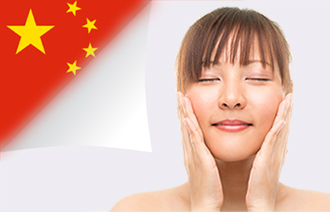China, Europe, and the United States are three of the world’s leading markets for professional skin care products. While Europe surprised everyone with the strongest growth it had experienced in the past six years, China managed to maintain growth and the status of the largest of these markets despite the current economic slowdown and challenging political conditions, registering growth across all distribution channels in 2014, finds our recently completed Professional Skin Care Global Series: Market Analysis and Opportunities.
The three culturally-distinct regions highlight that social, ethnic, and environmental factors play an undeniable role in shaping consumer preferences and behavior in the market, and therefore each market is unique, offering distinct growth pockets.The ethnic and cultural influences in China are most evident in the order of skin care concerns that drive the professional skin care market. The youthful appearance and resilience of Asian skin to the signs of aging, particularly wrinkles, is well known, and while skin aging is the leading concern globally, it ranks only third in China. The Chinese culture highly regards the complexion and clarity of skin, concerned more over dryness and skin-whitening.
In contrast with the product-driven markets of the United States and Europe, where retail take-home sales are nearly triple the size of professional-use product sales, in China, back-bar sales at spas, salons, beauty institutes, and physicians’ offices have a sweeping lead over take-home sales, shedding light on the service-led nature of this market.
China offers a dynamic playground for local brands, such as Amitabha, Chlitina, and Jourdeness, as well as international players, such as SkinCeuticals, Decléor, and NeoStrata. International brands, although accounting only for a little over one-tenth of the Chinese market, continue to thrive, growing at a healthy rate of over 8% and outpacing the market which posts growth of under 5% in 2014. Some smaller local brands struggle due to the strain of the scrutiny posed by the nationwide anti-corruption campaign, affecting several categories of luxury goods, including professional skin care products.
Like China, the European market is also fragmented, with a large number of players across the region, and no single brand with a convincing lead. In 2014, the top five leading brands account for just a little over one-fourth of the total sales in the region. However, the European professional skin care market, fortified by increased consumer spending, registers the highest sales increase in 2015 in the last six years. With the exception of Italy and Russia, all countries register solid growth. The United Kingdom shows the fastest growth of all countries at almost 8%.
While in China, skin-whitening products are the most popular, the opposite is true for Europe, where tinted moisturizers gain popularity in 2014, with several new offerings from leading marketers, such as the UV Daily Broad Spectrum SPF 40 by EltaMD and Bronz’Express Tinted Lotion by Académie Scientifique de Beauté. At the same time, demand for sun protection products continues to increase, not only in the light skin-seeking Chinese market, but also in the tan-loving European and U.S. markets. The increasing awareness about the harmfulness of sun exposure is helping sales of professional sun care marketers like EltaMD soar through 2014 and 2015.
The outlook for the professional skin care market is optimistic at a compound annual growth rate of close to 5% by 2019. Markets and consumers are rapidly evolving, with the focus shifting from lower costs to value for money, attention expanding from just the face to the overall body, and growing interest in hybrid products that blur the lines between skin care and makeup. More and more spas and offices are using beauty devices to supplement their back-bar services, more physicians are dispensing, and sales through the Internet are unstoppable.

